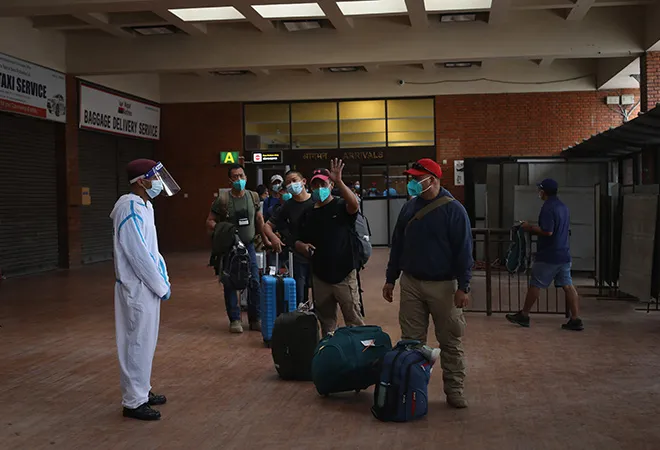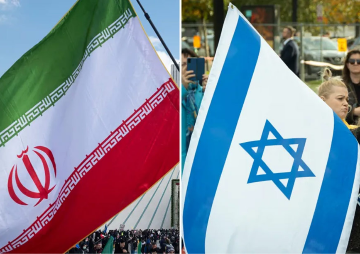
The world has been keenly yet indolently watching the unfolding of the Taliban takeover in Afghanistan. As the Taliban militants seize complete power in the country two decades since being ousted by the United States-led forces in 2001, what has come across in the international arena is a scenario of distraught civilians and international citizens based in the country, frantic to be led out as soon as possible. In this circumstance, with the collapse of the government of Afghanistan under President Ashraf Ghani, the country has been witnessing a series of evacuation flights from different parts of the world. The Himalayan country of Nepal is also in the process of evacuating Nepalese citizens who remain stranded in this dire situation. Even though 118 of them have been flown from Kabul to Kathmandu exclusively by the US Embassy (as on 17 August 2021), via a Qatar Air flight, more such evacuation processes need to be conducted for the other Nepalese nationals who are still present there and whose exact numbers remain unknown.
The Nepalese labour force in Afghanistan
The Nepalese Minister of Home Affairs, Bal Krishna Khand, has reacted to this situation with the immediate repatriation of the stranded Nepalese nationals. On an estimate, there are around 1,500 to 2,000 Nepalese working in the formal sector of Afghanistan, who have not yet been able to make it out of Kabul, according to Bharatraj Poudyal, Secretary, Ministry of Foreign Affairs. Most of these Nepalese work in the consular services of various foreign countries like Canada, Germany, Japan, United Kingdom, and the United States of America. On an average, they are deployed as security personnel in the diplomatic enclaves. Again, there are a few Nepalese who have been working as US and British Defense Contractors at the Bagram Air Base, in Kandahar and a few other military bases of foreign countries. There are also some private Nepalese contractors working in Kabul for Turkish sub-contractors or American multinational companies like Fluor Corporation. According to the Kathmandu Post, Nepal, there are 60 Nepalese nationals in the German Embassy, Kabul; 87 Nepalese present in the Embassy of the United Kingdom; 62 Nepalese in the Japanese Embassy and 60 Nepalese in the Canadian Mission in Kabul. Besides this number, 467 Nepali nationals are working under various United Nations’ specialised agencies in Kabul. Furthermore, there are the other hundreds of Nepalese who do not have any official documentation in the country, consequently leading to non-identification in the process of repatriation. Estimates have suggested that this undocumented group of migrant labourers can comprise more than 14,000 Nepalese who might not get a chance to get out of Afghanistan.
On an estimate, there are around 1,500 to 2,000 Nepalese working in the formal sector of Afghanistan, who have not yet been able to make it out of Kabul, according to Bharatraj Poudyal, Secretary, Ministry of Foreign Affairs.
As recently as 2020, during the last fiscal year ending mid-July in Nepal, 1,073 Nepalese nationals had obtained labour permits to work in Afghanistan, as per the reports of the Department of Foreign Employment. In the last seven years, 8,000 Nepalese migrants have moved to the war-torn country in search of a livelihood. It must be mentioned here that the movement from Nepal to Afghanistan is mostly through an illegal route and there is no systematic and substantial direct diplomatic channel between the two countries. The Department of Foreign Employment of Nepal has often mentioned the difficulties in going to Afghanistan for work purposes via Dubai, mainly due to the vulnerable security conditions. However, there are agents who deploy migrants on behalf of the companies and also issue demand letters with the designation, seal, and location of the company, leading the client to spend thousands of dollars for the procedure. More often than not, such a process is not official. The labour laws also vary from country to country and what is to be seen is each bilateral mechanism existing between the employer and the employee in the structure of individual labour laws of each country present.
The movement from Nepal to Afghanistan is mostly through an illegal route and there is no systematic and substantial direct diplomatic channel between the two countries.
If seen in general, it is a complicated situation for the landlocked nation to avoid such developments, primarily due to its lack of basic necessities of survival and its movement up the ladder to becoming a lower-middle income nation. Nepal is a country heavily dependent on income from foreign employment opportunities, directly impacting the national GDP as well. According to the International Labour Organisation (ILO), the Nepali migrant labourers not only contribute towards the development of their own country but the host country as well. This number has kept on increasing with every passing year and during the fiscal year of 2014, around 520,000 labour permits were issued to countries like Malaysia, Qatar, Saudi Arabia, Kuwait, and UAE, predominantly. On many occasions, India is used as a transit country for them because of the geographical proximity, from where they continue their onward journey. However, the vulnerabilities associated along with labour exploitation is a rampant reality. One such instance dates back to 2016 when a terror attack killed 12 Nepalese security contractors in Kabul. The group of people were hired by the Canadian Embassy and died while travelling in a minivan hit by a suicide bomber. This memory has scarred the Nepalese till today and the government has since been very reluctant to issue work permits to Afghanistan. Nonetheless, the grim reality portrays a different picture of people travelling despite these bottlenecks because their own country is not being able to provide them with a basic standard of living.
The country has been so consumed in its own heightened internal dissension that it has not been able to stabilise even after a month of the formation under the new rule of the Nepali Congress—an already divided house.
The present inconvenience
In the present situation, one of the major problems identified has been the inefficiency of the newly formed Sher Bahadur Deuba government in Nepal. Unfortunately, the Cabinet does not comprise of Ministers of foreign affairs, labour, or tourism, who could, to say the least, ease the current repatriation situation. The country has been so consumed in its own heightened internal dissension that it has not been able to stabilise even after a month of the formation under the new rule of the Nepali Congress—an already divided house. No constructive measures can be seen in view, except for a general minimum programme. Given the country’s history of political instability and nebulous democracy, what might come ahead in these trying times of COVID-19 is a question that seeks answers till today. This is why Nepal has been appealing to the international community for help in its repatriation efforts from Afghanistan by writing to the United Nations as well as sending several diplomatic missions to countries like the US. How far will it be able to get help for evacuation is also a question because the number of people desperate to come out is far more in number, including the general population of Afghanistan, who are approaching different countries to make a move. What Nepal needs at this stage is to have a liaison with India particularly so that it is feasible for the Indian recruited rescue flights to carry Nepalese therefore helping them to reach their homeland rather easily. This help can also be another thread of connection between the two countries that seems to have been missing in the past year because of the cold demeanour of the two emanating from the political map row and border issues. How far Nepal can manage this crisis is a challenge for the new Prime Minister as well and can either make or break the image of the new rule that has come with a lot of promises and apprehensions.
The views expressed above belong to the author(s). ORF research and analyses now available on Telegram! Click here to access our curated content — blogs, longforms and interviews.




 PREV
PREV


